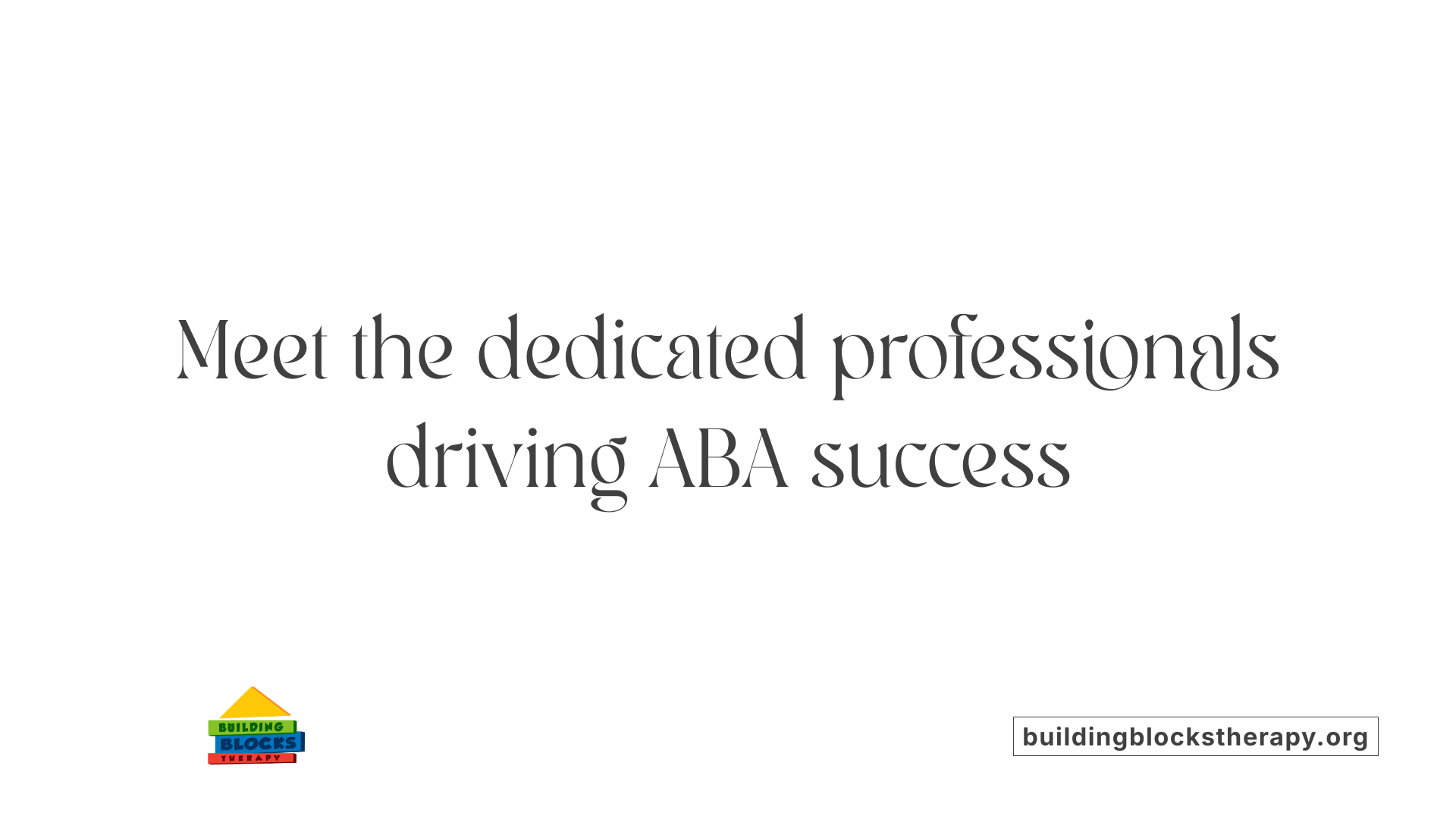The Importance of a Structured Environment for Children with Autism in Therapy
Harnessing Structure for Success: How Organized Therapy Environments Empower Children with Autism

Understanding the Role of Structure in Autism Therapy
For children with autism, the environment in which therapy occurs can significantly influence progress and outcomes. Structured environments in therapy, particularly in Applied Behavior Analysis (ABA), provide the predictable, supportive settings needed for these children to acquire critical skills and reduce challenging behaviors. This article explores why such environments matter, how ABA therapy utilizes structure, who provides it, and the unique benefits that arise from this approach.
Defining ABA Therapy and Its Focus on Structure
What is applied behavior analysis (ABA) therapy and how is it used to support individuals with autism?
Applied Behavior Analysis (ABA) therapy is a scientific and individualized treatment approach designed to improve helpful behaviors such as communication, social skills, attention, and academic competencies in individuals with autism. It focuses on increasing positive behaviors and decreasing harmful or challenging ones by applying learning principles based on the Antecedent-Behavior-Consequence (A-B-C) model.
Use of positive reinforcement and behavior tracking
ABA therapy uses positive reinforcement to encourage desired behaviors. When a child successfully completes small, broken-down tasks, they receive reward or encouragement, which increases the likelihood of repeating those behaviors. Progress is closely tracked through detailed data collection, ensuring measurable and observable changes in behavior.
Role of structured environment in ABA therapy
ABA is often conducted in highly structured environments, where routines and clear expectations support skill development. Center-based ABA therapy offers a controlled and stimulating setting with sensory tools, therapeutic materials, and play equipment that enhance engagement and learning consistency. Such environments promote rapid progress by providing regular peer interactions, consistent therapy frequency, and specialized professional support from BCBAs, Speech-Language Pathologists, and Registered Behavior Technicians (RBTs).
Methods such as Discrete Trial Training (DTT) and Pivotal Response Treatment (PRT)
ABA incorporates several teaching methods. Discrete Trial Training (DTT) uses step-by-step instructions and highly controlled learning sessions focusing on specific skills. In contrast, Pivotal Response Treatment (PRT) is more naturalistic and play-based, targeting pivotal behaviors like motivation and the initiation of communication to improve social and academic skills. Both approaches employ positive reinforcement and systematically fade prompts to foster independence.
These structured and evidence-based strategies make ABA therapy a cornerstone in supporting individuals with autism to develop meaningful communication, social, and daily living skills, thereby enhancing their quality of life.
The Crucial Role of Structured Environments in Therapy Centers
What Are the Characteristics of Center-Based ABA Therapy Environments?
Center-based ABA therapy settings offer a structured, controlled, and stimulating environment tailored for intensive autism intervention. These centers provide consistency in routines and therapeutic approaches, creating an optimal atmosphere for learning and behavior modification. Unlike in-home therapy, the controlled nature of the center allows for systematic implementation and monitoring of therapy plans.
How Are Sensory Tools, Therapeutic Materials, and Play Equipment Used?
Therapy centers integrate various sensory tools, specialized therapeutic materials, and physical play equipment to heighten engagement and facilitate skill development. These resources help simulate real-life scenarios and provide sensory experiences that support learning. For example, tactile toys and visual aids can enhance focus and participation, while physical play equipment encourages motor skills and social interaction.
What Are the Benefits of Controlled and Consistent Surroundings for Skill Acquisition?
The structured and consistent surroundings found in therapy centers promote more significant progress in areas such as social, emotional, and daily living skills. Frequent, routine-based therapy sessions allow children to reliably practice and generalize new behaviors. This predictability helps reduce anxiety and reinforces learning, making the acquisition of essential skills more effective than in less structured settings.
How Does Structured Activity Enhance Engagement?
Engagement is increased through well-organized and thoughtfully planned activities designed to be both motivating and educational. Structured tasks break down complex skills into manageable steps, ensuring clear instructions and guided support. This approach encourages active participation, fosters independence, and helps maintain focus during sessions, leading to better outcomes in communication, play, and self-care abilities.
Social Skill Development Through Peer Interaction in Structured Settings
How Does Peer Interaction Benefit Children in Center-Based ABA Therapy?
Peer interaction in center-based ABA therapy plays a crucial role in enhancing social development for children with autism. Engaging with peers in these structured settings helps children practice and refine essential social behaviors. Unlike individual therapy, the group environment offers natural opportunities for children to experience real-time social dynamics.
What Social Skills Do Children Develop Through These Interactions?
Through peer interaction, children with autism develop critical communication skills, such as initiating conversations and responding appropriately. Sharing and turn-taking are practiced repeatedly, encouraging cooperative behaviors. Emotional regulation is also supported as children learn to recognize, express, and manage their emotions in social contexts with peers.
What Makes Structured Group Environments Unique for These Social Opportunities?
Center-based ABA therapy settings provide a controlled and stimulating environment designed to promote engagement. These spaces use sensory tools, therapeutic materials, and play equipment to encourage interaction. Because therapy is delivered consistently and intensively, children experience frequent social exchanges, enabling them to practice and generalize social skills effectively over time. Additionally, trained professionals facilitate and support these interactions, ensuring they are meaningful and beneficial.
Overall, peer interactions in structured group environments within center-based ABA therapy offer unparalleled opportunities for children with autism to develop foundational social skills critical for daily life and building relationships.
The Professional Team Behind ABA Therapy Delivery

Roles of Board-Certified Behavior Analysts (BCBAs)
Board-Certified Behavior Analysts (BCBAs) play a central role in ABA therapy for individuals with autism. These highly trained professionals design and oversee individualized treatment plans based on detailed assessments. They ensure that therapy goals are tailored to each child's unique needs, focusing on socially significant behaviors like communication, social skills, and daily living. BCBAs also analyze ongoing data to adjust interventions, maximizing effective outcomes and ensuring evidence-based practices.
Involvement of Registered Behavior Technicians (RBTs) and Speech-Language Pathologists
Registered Behavior Technicians (RBTs) often provide direct, one-on-one therapy sessions, implementing strategies under BCBA supervision. Their work includes delivering discrete trial training, natural environment teaching, and positive reinforcement to encourage desired skills. Speech-Language Pathologists complement ABA teams by addressing language and communication deficits, critical for early intervention. These specialists collaborate closely to target expressive and receptive language skills within the ABA framework.
Collaboration and Individualized Treatment Planning
ABA therapy is highly individualized, requiring close collaboration among BCBAs, RBTs, speech therapists, and other specialists like occupational therapists when necessary. This teamwork ensures comprehensive approaches addressing a range of skills, from social interaction to motor development. Regular team meetings and progress reviews allow for adjustments to therapy plans, ensuring that interventions remain relevant and effective across environments.
Training of Parents and Caregivers to Extend Therapy at Home
An essential element of ABA therapy is empowering parents and caregivers with training in ABA principles. Professionals teach families how to apply behavior strategies and prompts at home, creating consistent environments that reinforce skill development and reduce challenging behaviors. This extension of therapy beyond clinical settings fosters generalization of skills and enhances long-term gains.
Who Typically Provides ABA Therapy for Individuals with Autism?
ABA therapy is provided by a dedicated team of qualified professionals. BCBAs lead the design and monitoring of treatment plans while RBTs and therapists deliver daily intervention. Speech-Language Pathologists and other specialists contribute their expertise to versatile treatment targets. Together, they create a structured, supportive framework for intensive therapy that aims to build communication, social, emotional, and life skills for children with autism.
Benefits of a Structured Therapy Environment for Children with Autism

What are the main benefits of ABA therapy for individuals with autism?
Applied Behavior Analysis (ABA) therapy is a scientifically validated approach that brings numerous benefits to autistic individuals. It focuses on improving communication, social skills, and daily living activities, such as self-care and independent functioning. By using methods like positive reinforcement and systematic teaching, ABA helps children develop essential abilities in a clear, measurable way.
Improvement in communication, social skills, and daily living
Structured therapy environments provide controlled, consistent settings where children can learn vital skills. In center-based ABA programs, specialized sensory tools, therapeutic materials, and simulated learning scenarios engage children effectively. These environments boost language development and social interaction, encouraging communication and peer relationships through guided play and social exchanges.
Early intensive intervention outcomes
Starting ABA therapy early and maintaining consistent routines enhances progress significantly. Intensive sessions delivered in specialized centers often lead to better developmental outcomes compared to less structured alternatives. Early intervention increases the chance that nonverbal children develop functional communication skills and fosters improvements in cognitive and emotional growth.
Reduction of challenging behaviors through environmental control
By modifying the environment to reduce triggers of challenging behaviors and emphasizing positive reinforcement, ABA therapy helps decrease undesirable actions. Structured settings allow careful observation and adjustment, ensuring interventions target socially meaningful behaviors and promote positive alternatives.
Support for independence and quality of life
ABA therapy emphasizes breaking down skills into manageable steps and gradually promoting independence. This structured approach supports the acquisition of daily living and self-care abilities that enhance autonomy. Comprehensive programs led by trained professionals, including behavior analysts and speech therapists, foster a well-rounded development, improving quality of life and social participation.
| Aspect | Benefits | Description |
|---|---|---|
| Communication and Social Skills | Enhanced through peer interaction | Developing sharing, turn-taking, and emotional regulation in group settings |
| Early Intensive Intervention | Greater developmental gains | Early, consistent therapy boosts language and cognitive skills |
| Behavior Management | Reduction of problem behaviors | Environmental adjustments and positive reinforcement replace challenging behaviors |
| Independence and Daily Living | Promoted via structured learning | Stepwise skill building encourages self-care and autonomy |
How ABA Therapy Differs from Other Autism Treatments
Behavioral science foundation of ABA
ABA therapy is grounded firmly in behavioral science, using principles such as reinforcement and environmental influence to encourage positive behavior changes. This scientific base makes it distinct from other therapies that may rely more on developmental milestones or sensory integration without the same emphasis on observable behavior modification.
Focus on measurable, observable behaviors
A defining feature of ABA is its focus on behaviors that can be seen and measured. Every intervention targets clearly defined behaviors, allowing specialists to track progress objectively and adjust treatment plans based on data. This contrasts with therapies that might focus on broader developmental or emotional growth, which can be harder to quantify.
Comparison with developmental, occupational, and relational therapies
While developmental therapies like speech and occupational therapy focus on language skills, motor abilities, or sensory processing, ABA systematically teaches specific skills through structured tasks and consistent reinforcement. Social-relational approaches target emotional bonds and social skills often through parent or peer involvement, but ABA prioritizes behavior and skill acquisition with evidence-based strategies. For example, occupational therapy may target sensory integration, while ABA may use discrete trial training to teach communication and social behaviors.
Individualized, data-driven treatment plans emphasizing skill acquisition
ABA uses personalized programs designed by Board Certified Behavior Analysts (BCBAs). These plans emphasize breaking down skills into small, manageable steps and use data collection to guide ongoing treatment. This individualized approach ensures interventions focus on socially significant skills that benefit the individual directly, and it highlights ABA's commitment to measurable outcomes and functional independence.
| Therapy Type | Focus Areas | Approach Highlights |
|---|---|---|
| ABA Therapy | Observable behaviors, skill acquisition | Data-driven, uses reinforcement, structured one-on-one teaching |
| Developmental Therapy | Language, physical, social development | Focuses on developmental milestones, less on behavior modification |
| Occupational Therapy | Sensory integration, motor skills | Enhances sensory response and physical abilities |
| Social-Relational | Social skills, emotional bonding | Uses naturalistic methods with peer/parent involvement |
Starting ABA Therapy: Assessment and Individualized Planning

What is the typical process for initiating ABA therapy for an individual with autism?
Beginning ABA therapy involves a structured and thorough assessment by a Board Certified Behavior Analyst (BCBA). This process often includes detailed, play-based observations in various environments, such as the clinic, home, or school. These assessments identify the individual's strengths and challenges, focusing on communication, social interaction, behavior patterns, and daily living skills.
Following assessment, the BCBA develops a personalized treatment plan. This plan targets specific goals, such as enhancing communication abilities or reducing challenging behaviors. It carefully applies ABA principles like positive reinforcement and functional behavior analysis, ensuring interventions are behaviorally measurable and socially significant.
Registered Behavior Technicians (RBTs) deliver therapy sessions under the supervision of BCBAs. These sessions use evidence-based ABA methods such as discrete trial training (DTT) and natural environment teaching (NET) to break down skills into manageable steps, promote independence, and encourage positive behavior changes.
Monitoring progress is integral to ABA therapy. Data on behavior and skill acquisition are regularly collected and reviewed. This enables the therapy team to adjust interventions promptly for optimal outcomes.
Collaboration with families and caregivers is essential throughout the process. Parents are often trained in ABA strategies to maintain consistency outside therapy sessions, which aids generalization of skills to everyday life. This team-based approach helps create a supportive environment for meaningful skill development and long-term success.
The Impact of Consistency and Routine in Structured Therapies

Why Are Consistent Schedules and Routines Important in Therapy Centers?
Structured therapy centers provide a consistent, predictable environment that greatly benefits children with autism. Consistent schedules and routines help reduce anxiety and confusion, allowing children to focus on learning and practicing new skills. Clear daily routines establish expectations, which supports emotional regulation and behavioral compliance.
How Does High-Frequency Therapy Influence Development?
Higher frequency of therapy sessions in center-based ABA programs results in more opportunities for skill practice and reinforcement. Frequent, intensive interventions contribute to faster and more substantial improvements in social, emotional, communication, and daily living skills. Consistent therapy also helps maintain momentum and encourages steady progress.
What Is the Role of Generalization Across Environments and Over Time?
A central goal of ABA therapy is that skills learned in one setting transfer to other environments and situations. Therapy programs are designed with generalization in mind, ensuring children apply their skills at home, school, and in the community. Regular assessments help track skill retention and prompt adjustments to promote lasting development.
How Are Visual Routines and Clear Boundaries Incorporated?
Many therapeutic approaches, including educational models like TEACCH, rely on visual routines and clear boundaries to structure learning environments. Visual schedules, signs, and physical boundaries provide concrete cues that guide children’s behavior and help them navigate tasks independently. These tools enhance understanding and facilitate smoother transitions between activities.
The combination of consistent routines, high-frequency therapy, intentional skill generalization, and structured visual supports creates an environment conducive to meaningful and lasting progress in children receiving ABA therapy.
Structured Environments: Foundations for Growth and Independence
Structured therapy environments, integral to ABA and other autism interventions, create the predictable, supportive settings essential for children with autism to thrive. These environments facilitate consistent learning, enable meaningful social interactions, and optimize individualized treatment delivery by qualified professionals. Through evidence-based practices emphasizing positive reinforcement and systematic skill acquisition, structured environments maximize the potential for communication, social development, and daily living skills. For families and caregivers, embracing and supporting these structured frameworks offers a pathway toward greater independence and quality of life for their children with autism, laying the groundwork for success that extends beyond the therapy setting.
References
- What is ABA Therapy For Autism?
- Optimizing the Learning Environment: How ABA Skill Building ...
- Behavioral Therapy for Autism Spectrum Disorder in Children
- Treatment and Intervention for Autism Spectrum Disorder
- Applied Behavior Analysis (ABA)
- What to Expect on the First Day of ABA Therapy?
- What to Expect When Starting ABA Therapy: A Parent's ...
- Applied Behavior Analysis (ABA)
- The Top 10 Reasons Children With Autism Deserve ABA





